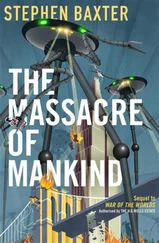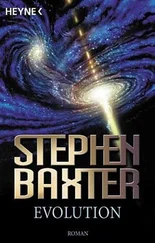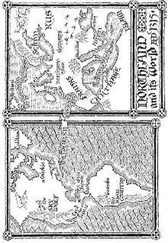“I never heard of anything like this.”
“You will learn this is a common pattern. Over time humans have been projected into all sorts of environments, and they have adapted. And anywhere the living is stable you find the same phenomenon, an enthusiastic discarding of the burden of thinking.”
She frowned. “The Nord is half a million years old. We were isolated. We could have lost our minds.”
“But you remained a people in transition — never settling, taking your little world with you, rebuilding it all the time. Why, the stroke of genius was to have even your breeding cycle dependent on technology!”
“The birthing pods.”
“Yes. Of course it is possible to retain a technological capability without consciousness — think of the Shipbuilders — but you couldn’t afford to become dumb, for your lives depend on the mechanisms that keep the Nord habitable. For your kind, the trick worked.”
Your kind. I t was a chilling phrase — and an insulting one.
Alia’s people were proud of their pedigree, proud of what they had become. It was a very long time since her remote ancestors had left the home planet, and her physiology, her frame and musculature, were built for low-gravity climbing as much as walking. But after half a million years of selection and purposeful enhancement, in Michael Poole’s terms she was an intuitive genius. But to Reath, it seemed, she was just one of another kind, her people on the Nord and all their rich history just another type of post-human, no better than the mindless creatures swimming in this monstrous sea.
Alia felt resentful, and wanted to have nothing in common with these creatures. “All they do is swim around chasing fish. They are subhuman — aren’t they? If their brains have shriveled, if they have no mind—”
“I always prefer the term ‘post-human,’ regardless of encephalization. Best to avoid value judgments.”
“I can give this world a name,” she said. “ They can’t.”
“But what need have they of names? Alia, names or not, they were once human. They may have no advanced consciousness now, but they have feelings, sensations, a sensorium probably unlike any other type. They are a thread in mankind’s history, Alia, that must be drawn back into the tapestry. This is why I brought you here. You must learn to see mankind as the Transcendence sees it, without prejudice—”
She hazarded, “And with love?”
“Love, yes! And though we have talked of long loves, time is short — at least, in the longer view of the Transcendence. We are all diverging from each other, we different sorts of humans. There may come a point when we can no longer talk to each other, even recognize our commonality. We have to find our way back together again before we lose each other completely…”
The post-humans, swimming beneath the platform, were baffled. They had responded to the subsonic beacon that drew them there, but there was nothing for them, no food, no mates. Disappointed, in pairs and family groups, they drifted away.
Once I’d surfaced from VR I tried to get down to some work, which I figured was the best way to waste the days I had to endure before I could get into that plane seat. With a fat mug of coffee I went to my mother’s study, which had the best connection and display facilities in the house, and closed the door.
The first thing I did was bring up a VR of the current design-freeze of our space probe. The bulky main body unfolded, bejeweled with lacy antennae, attitude thruster nozzles, and instrument booms, hanging in the air before me like a beautiful toy.
Just looking at the thing was calming. This was my pet starship.
It was called the Kuiper Probe, in the requests-for-tender documents from NASA and the USAF that defined it. If it ever actually got built it would no doubt be given some more exotic name. I inspected the liquid-lead coolant tanks and the neutron shield and the instrument buses, and the suite of tiny probes we planned to drop off on the way out of the solar system, and the Higgs field power plant at its very core.
Strictly speaking it wasn’t really a starship, of course. For one thing it was unmanned, and for another it wouldn’t go to the stars. But it was an “interstellar precursor mission,” in the jargon. It would fly a proving flight for the key technologies that might one day take our machines, or even us, very much further.
Our probe was designed to sail a thousand astronomical units from the sun — that is, a thousand times as far as Earth is from the central star. By comparison the furthest planet, Pluto, is a mere forty AU out, but the nearest star, in the Alpha Centauri system, is more than a quarter of a million AUs away. But our probe’s ten-year, thousand-AU mission would be a first step, a preliminary sail out of the cozy harbor of the inner system. Nothing had traveled further from Earth save the long-derelict Voyagers and Pioneers, planetary probes from the 1970s. And where the Voyagers had had to rely on gravitational slingshots to hurl them so far, we would be going under our own steam, fueled by cosmic might.
There was even good science to do on the way. We would be able to explore the outer solar system, far beyond Pluto, where flocks of ice moons, the Kuiper objects, fly through the frozen dark. Our trajectory would give precise measurements of such huge numbers as the total mass of the solar system. We would pass through the heliopause, where the wind from the sun disperses into the wider interstellar medium, and study whatever strange cosmic particles and radiations from deeper space are blocked from Earth’s view.
And, most significant of all, we could visit the Kuiper Anomaly. That glimmering tetrahedron had continued its own long, aloof orbit around the sun ever since its discovery in the first decade of the century. Now was the time to go confront that strange visitor.
That, in fact, was the reason the USAF was involved. In our little design community there was even a rumor that in among the reserve payload weight, set aside for contingencies and late additions, was an allowance of fifty kilograms or so for a small bomb.
I tried to focus. I had plenty of challenging work to get done; I was in the middle of involved structural analyses of the Probe’s propulsion system. But my concentration wouldn’t gel. Designing a starship as therapy: it often worked, but not today.
I was deeply relieved when Shelley Magwood, my nominal boss, spotted I was online, and logged on to talk to me.
Shelley coalesced in my mother’s study. She was sitting in a fashionable molded-ceramic chair projected from her office in Seattle. She had heard about my troubles. “I don’t know what you’re doing sitting there working on the damn Probe,” she snapped. “The Probe can wait. The Kuiper Anomaly isn’t going anywhere…”
Shelley was thin, intense, with a strong face, high cheekbones, and a Roman nose. Her hair was dirty blond, but I suspected she was already dyeing it, in her thirties. I always thought she worked too hard, burning herself up in her energetic pursuit of too many projects, but there always seemed to be a smile, just behind the door of her face. Nowadays she was more a manager, an entrepreneur, than an engineer, and I suspected she indulged in this deep space probe proof-of-concept project as a sanity release, just as I did. I liked her a hell of a lot.
“You should be with Tom,” she said. “Get your fat backside on a plane.”
“I’ve tried that,” I said. “I have a seat lined up. The protocols—”
“Bugger the protocols. Look, if you need help—”
“Thanks. I just have to be patient.”
“I’m sorry about Tom.”
Читать дальше












